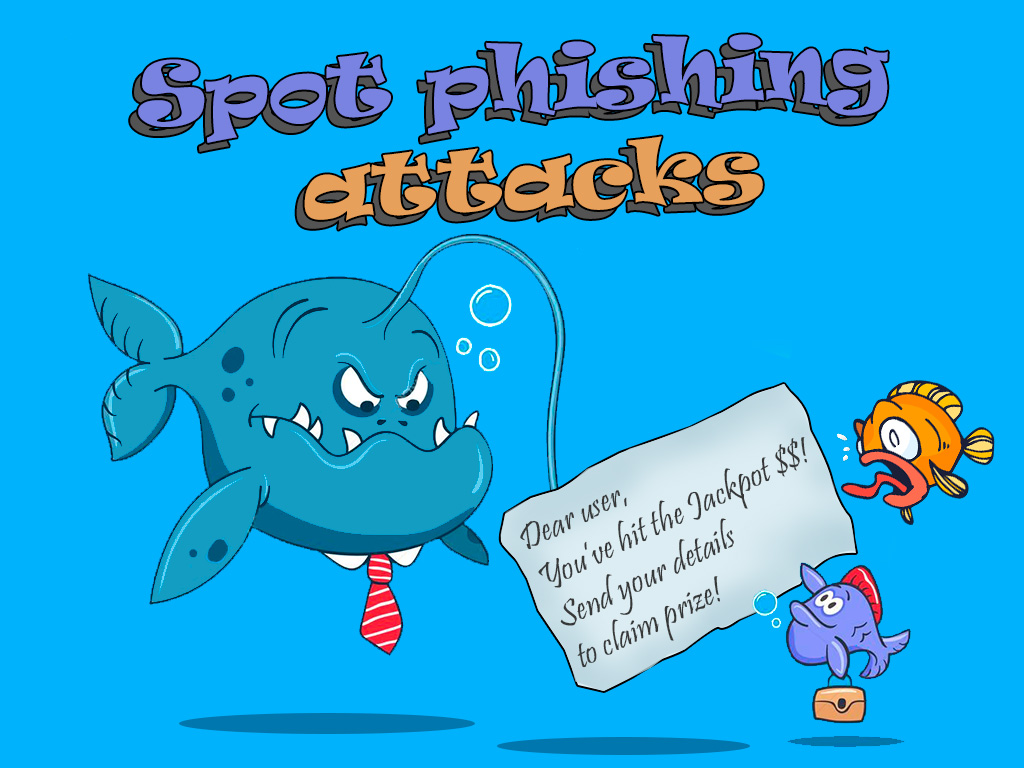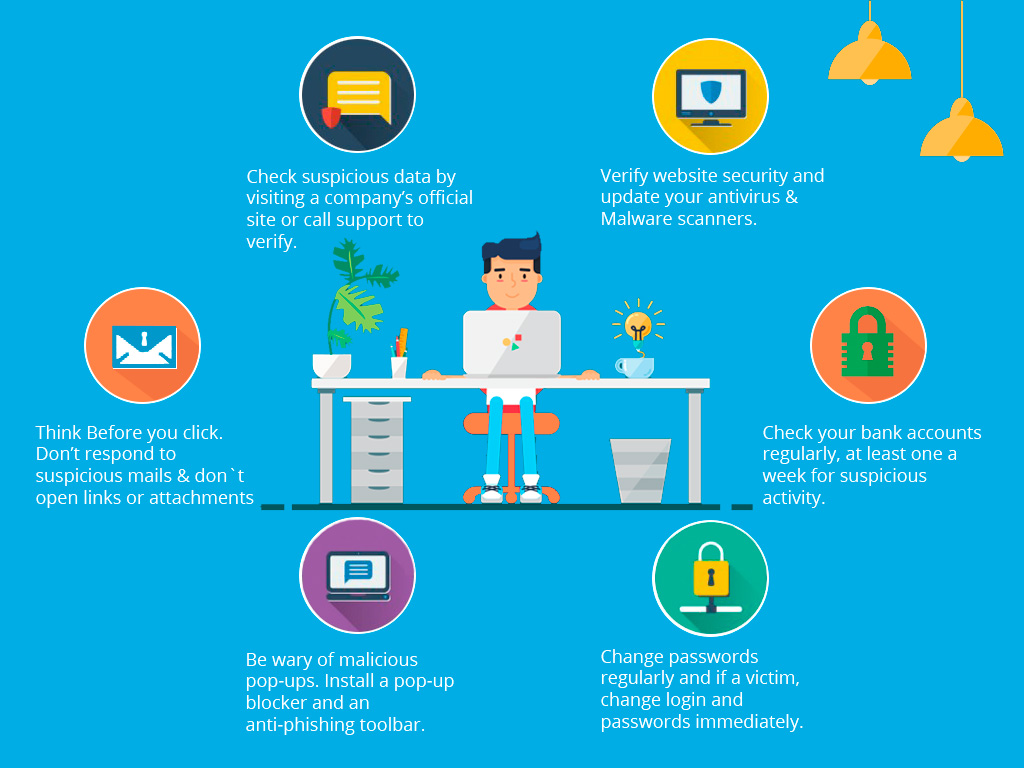Table of Contents
Overview
As a rule of thumb, we all know that we should not click on random links in emails. However, sometimes even the most tech savvy of us fall prey to a good phishing scam. Phishing is a technique used by cyber criminals and hackers to trick users into giving up sensitive information, from financial information, passwords for consumer sites and much more. Knowing how to identify these scams are important to protecting your information.
Though, there is no fool proof way to fully avoid phishing scams, even big companies like Facebook and Google have fallen prey, we will discuss tips on how to protect yourself.
Risks to Email Security
- One of the major threats to email security is unsecured servers. Most email servers are not encrypted. Once information passes between servers it is easy for third party companies or cyber criminals to intercept your emails and read them or edit them before you receive them.
- Signing up for free apps using your email accounts from Google. Agreeing to certain permissions from free apps can leave your email account vulnerable. Companies can scan your emails in order to specifically target you for marketing while leaving you vulnerable.
10 Ways to Protect Yourself against Phishing

1. Be Vigilant: Know how to identify Phishing Scams
There are specific characteristics that identifies a phishing attack through email:
- They use duplicate images from real companies
- They copy the name of Company and their logo or the name of an actual employee
- Include links to sites that are visually similar to real company websites
- They promote gifts or warn about the loss of an existing account with a call to action
2. Stay Informed: Know the latest Phishing Techniques
Knowledge is power. Staying informed about new phishing attacks keeps you ahead of the game. Cyber criminals and hackers are constantly coming up with new scams. If you do not stay in the know, you can leave yourself vulnerable to these attacks. Keep your eyes peeled for news on new Phishing Scams by reading tech blogs daily. If you have information beforehand, you are less likely to be scammed.
3. Think before you Click
Before clicking on any link take the time to consider if it is a reliable source. Clicking on links that appear in random, suspicious emails is not smart and can land you right in the middle of a phishing trap. To avoid being tricked, hover over any link before clicking on it, to see if it leads where it says it leads. Most of the time phishing scams have a completely different address from the company it is claiming to be. If you do click on a link, because the phishing email claims to be from a legitimate company or a recognisable website, it is likely they will have a facsimile of that company’s website.
Be wary of emails asking you to fill in forms or give personal information when the email does not contain your name. Emails that begin with “Dear Customer” as suspect. If you are signed up for services with a company and receive emails from them, they will always use your actual name. If you are suspicious and doubt the validity of the email, go to your web browser and type in the actual website.
4. Install an Anti-Phishing Toolbar
Internet security is crucial to protecting you from would be hackers and other cyber criminals. One of the ways to block phishing and spear-phishing scams is by installing an Anti-Phishing toolbar to your preferred web browser. The toolbar works by scanning sites that you visit and checking them against known phishing sites. It will also alerting you if you stumble on a malicious site. You can download a free one from your browser’s extension store.
5. Have Overall PC Security
Security for your devices is a necessity. Ensure that all of your devices have an up to date Anti-Virus, Anti-spyware and Malware software with a Firewall. Most applications for PC Security includes Internet Security as well. Having PC security can also catch any malware that maybe installed by phishing websites. These programs can scan every file on your computer to ensure that you haven’t picked up anything nasty.
6. Verify a Website’s Security
Trusted websites will always have security certificates installed for your protection. If a website you visit does not have the trusted “https” with a closed lock then you are at risk. Do not give sensitive information to sites without this security tag and protect your websites by getting an SSL certificate. Sites that simply have “http” are not secured, and most phishing sites are not secured websites.
7. Check online accounts regularly
Check your online banking accounts, merchant accounts and any other accounts online that has your sensitive information stored for any breaches. If you don’t visit an online account regularly, anyone can hack your information and use it. Also, to protect yourself, get into the habit of changing your passwords regularly. Use passwords that are a combination of letters, numbers and other special characters. To safeguard against credit card and other financial fraud, ensure that you check your bank statements frequently and know all of your online purchases. Be sure to check your financial statements weekly or monthly.
8. Keep Browsers Up to Date
Popular browsers release and update security patches all the time. To ensure that your browser is constantly up to date, set your updates to be automatic or check for updates manually on a regular basis. These security patches are in response to the constant new releases of security loopholes, malware, phishing scams and other tricks used by cyber criminals. Do not ignore messages to update your browser. Be Also Wary of Pop-Up!
Always have a Pop-Up blocker installed on your browser. Phishing attempts often masquerade as trusted content from websites in the form of pop-ups. Many browsers allow you to block pop-ups, and give you the option of allowing them on a case by case basis on trusted websites. However, sometimes malicious pop-ups slip through the cracks. When this happens, the rule is not click on the ‘x’ in the top corner and not the cancel button, which usually links to a malicious website.
9. Use a SPAM Filter on your Email Accounts
Be sure to enable your SPAM Filter to maximum on your email accounts. These filters work great at keeping out suspicious emails from your inbox. If an address is not known or saved in your address book it is filtered to a SPAM folder. When signing up for trusted websites however, sometimes their welcome or verification email can end up in the SPAM so be sure to check it and empty it from time to time. Also, consider adding trusted emails to your email list.
Remember that there is no iron clad fool proof way of preventing Phishing Scams. The best way is to ensure that you are being hyper-vigilant while using and receiving email, and by extension browsing the internet. Be sure to have the best in PC and Internet security, secure your browsers, and be extra cautious when receiving emails from sources you do not know.
